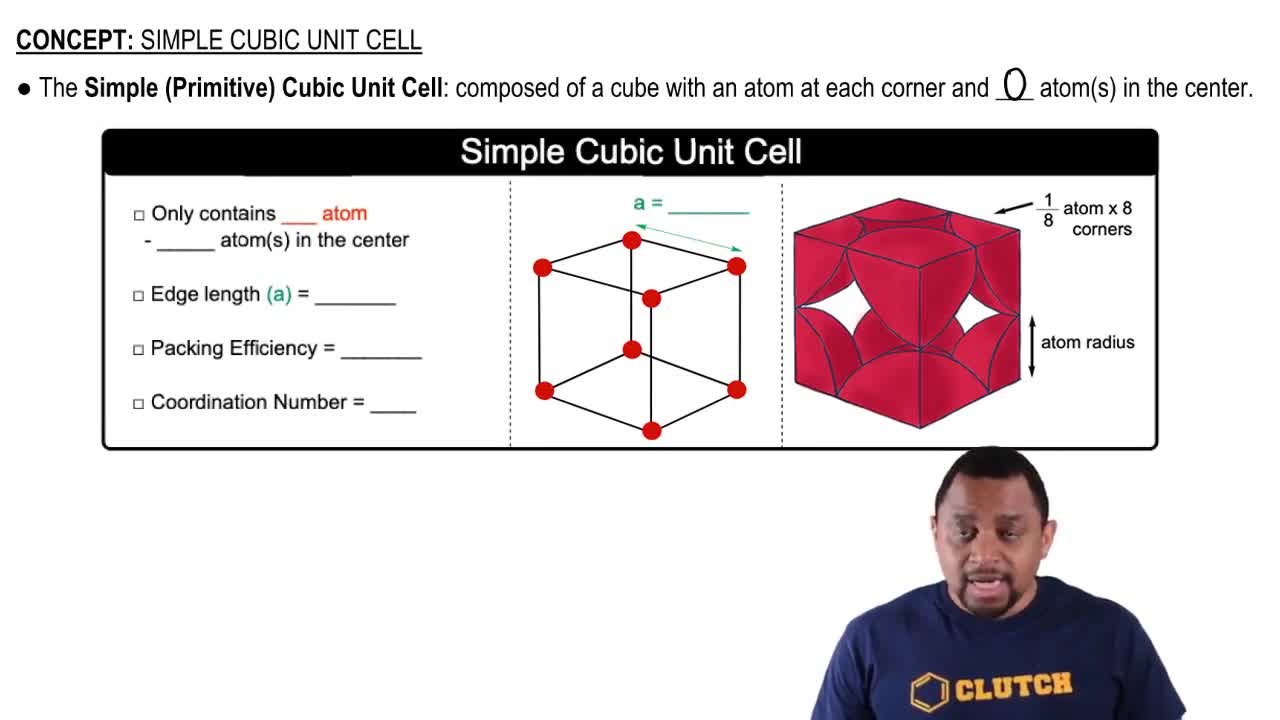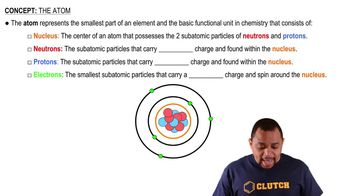The unit cell of a compound containing potassium, aluminum, and fluorine is shown here. (a) What type of lattice does this crystal possess (all three lattice vectors are mutually perpendicular)?
Ch.12 - Solids and Modern Materials
Chapter 12, Problem 33a
Consider the unit cells shown here for three different structures that are commonly observed for metallic elements. (a) Which structure(s) corresponds to the densest packing of atoms?

 Verified step by step guidance
Verified step by step guidance1
Identify the type of unit cell for each structure: A, B, and C.
Determine the number of atoms per unit cell for each structure.
Calculate the packing efficiency for each type of unit cell.
Compare the packing efficiencies to determine which structure(s) have the densest packing.
Conclude which structure(s) correspond to the densest packing of atoms based on the highest packing efficiency.

Verified video answer for a similar problem:
This video solution was recommended by our tutors as helpful for the problem above.
Video duration:
1mWas this helpful?
Key Concepts
Here are the essential concepts you must grasp in order to answer the question correctly.
Unit Cell
A unit cell is the smallest repeating unit of a crystal lattice that reflects the overall symmetry and structure of the entire crystal. It defines the arrangement of atoms in a solid and can vary in shape, such as cubic, tetragonal, or hexagonal. Understanding unit cells is crucial for analyzing the packing efficiency and density of different crystalline structures.
Recommended video:
Guided course

Simple Cubic Unit Cell
Atomic Packing Efficiency
Atomic packing efficiency (APE) refers to the fraction of volume in a crystal structure that is occupied by atoms. It is calculated by comparing the volume occupied by the atoms to the total volume of the unit cell. Higher packing efficiency indicates a denser arrangement of atoms, which is important for understanding the physical properties of metals and their stability.
Recommended video:
Guided course

Atom Structure
Close-Packed Structures
Close-packed structures, such as face-centered cubic (FCC) and hexagonal close-packed (HCP), are arrangements where atoms are packed together as closely as possible. These structures maximize atomic density and are characterized by specific coordination numbers and packing efficiencies. Identifying these structures is essential for determining which metallic arrangements provide the densest packing.
Recommended video:
Guided course

Resonance Structures
Related Practice
Textbook Question
Textbook Question
Consider the unit cells shown here for three different structures that are commonly observed for metallic elements. (b) Which structure(s) corresponds to the least dense packing of atoms?
Textbook Question
Sodium metal (atomic weight 22.99 g/mol) adopts a body-centered cubic structure with a density of 0.97 g/cm3. (a) Use this information and Avogadro’s number (NA = 6.022 × 1023/mol) to estimate the atomic radius of sodium. (b) If sodium didn't react so vigorously, it could float on water. Use the answer from part (a) to estimate the density of Na if its structure were that of a cubic close-packed metal. Would it still float on water?
